There are several new smartphones hitting the market with the recent release of the iPhone 4 and EVO 4G as well as the imminent arrival of the new Windows 7 based phones. These phones are feature rich and deserve a Bluetooth headset that can take advantage of their built in technology.
Sound ID the highly regarded maker of high-end Bluetooth headsets is seeking to be one of the first companies to help revolutionize the Bluetooth headset with the release of their 5 Series line. The Sound ID 510 is the first Bluetooth headset designed to work with its own iPhone app and we will be looking at it in detail for today’s review.
Sound ID have released well-designed low-profile headsets in the past and continue their trend of quality Bluetooth headsets with this model. Usually I am pretty jaded when reviewing Bluetooth headsets as they seem to have pretty similar specs but the Sound ID has definitely piqued my interest with several unique features.
One of the first changes on the 510 is the touch sensitive volume control. The increase in the amount of capacitive touch based phones begs the question why not have a Bluetooth headset that works the same way? The on/off switch is another nice change from previous models that required a press and hold to power on and off the headset.
SoundID also brought back Environmental Mode, which is their audio pass through technology letting the user hear ambient sounds as if they were not wearing a headset.
The Sound ID 510 arrives in a black cardboard box with a clear plastic cover that is reminiscent of earlier iPhone packaging. Through this clear plastic window the Sound ID 510 is easily visualized.
Removing the white plastic separator on which the Bluetooth headset rests reveals the included accessories – Quick Start Guide, Universal AC travel charger, short USB charging cable, clip holster carrying case, three sizes of RealComfort EarLoops and an Ear Hook.
The Sound ID 510 has a piano black finish on the outside face of the headset. Personally I love the look of piano black devices until someone touches the item, then fingerprints are all I notice. I wish Sound ID kept the matte finish found on the Sound ID 400.
The headset measures 2.165″ x 0.6“ x 0.325″ (55 x 15.5 x 8.2 mm) and weighs <0.28 ounces (8 grams). The Sound ID 510 is powered by a Lithium Polymer battery that has 5 hours talk time, 135 hours standby and takes approximately 2.5 hours to charge.
Compared to the previous 300 and 400 models, the 510 features a more square configuration. On the outer face we find a round Main button and LED light sitting near the earpiece.
Just below or above this button depending on the orientation of the headset is the on/off toggle switch. These are only two physical buttons on the new headset. The volume is controlled via a touchpad which is the section in front of the main button on the outer face of the device.
Opposite the on/off switch is a stripe that extends across the side of the Sound ID 510 where the three microphones are located. At the rear is a micro USB connector for charging and updating the headset’s firmware via computer. Finally we see that earpiece located on the backside of the headset. A slight twist of the EarLoop changes the headset’s orientation from left to right position.
A welcome new addition is the clip-holster designed to keep the Sound ID 510 both safe when not in use end and allowing it to be stored in an easily found location. The clip can attach to a visor in one’s car or where ever else you frequently use a Bluetooth headset. Sound ID includes three sizes of RealComfort EarLoops or if you prefer an over the Ear Hook with a foam earpiece cover.
The AC charger is a small piano black cube which is slightly larger than the iPhone AC adapter. Sound ID provides a short six-inch micro USB cable which can be used with the charger or to connect to a PC or Mac.
The Quick Start Guide goes over the features of the Sound ID 510 as well as the pairing process.
Specifications:
Sound ID 510
The world’s first Bluetooth headset with its own iPhone App.
Compatible with all Bluetooth enabled mobile phones (2.0 and higher), Sound ID 5 Series Premium Bluetooth® Headsets combine the best industry features into one sleek and powerful headset, plus the refined sound quality you’ve come to expect from Sound ID.
With touch sensitive volume control, easy one button functionality, 3X NoiseNavigation with advanced wind protection, and even more customization available with EarPrint App, the Sound ID 510 is truly revolutionary—the most personalized premium Bluetooth® headset ever.
EarPrint App
Personalize your sound preferences and settings with the first ever iPhone App for Bluetooth headsets.
Environmental Mode
Boosts listening power between calls by letting sound to pass through the headset as if you weren’t wearing it.
MultiPoint
Allows the Sound ID 510 headset to be activly paired with two Bluetooth enabled mobile phones
Touch Sensor Volume
No more fumbling around to adjust the volume, your in control with just a touch of your finger on the headset.
RealComfort EarLoops
Anatomically engineered for all-day comfort and conveniently stays in place even during rigorous activity.
USB Connectivity
Charge or upgrade your headset anywhere with USB connection to a computer. Wall adapter also included.
3X NoiseNavigation
3 sensitive microphones eliminate wind and background noise from both ends of your call.
Listen to Music (A2DP)
Listen to music, GPS navigation, webcasts and more on your headset (firmware update may be required)
Long Life Battery
Advanced Lithium-Polymer battery provides up to 5 hours talk time, lasting 135 hours on standby.
Slim Compact Design
2.165″ x 0.6“ x 0.325″ (55 x 15.5 x 8.2 mm)
Ultra Lightweight
Weighs less than .28 ounces (8 grams)
Price $119.99 (From Amazon at time of review)
The Sound ID 510 comes pre-charged so you can start using it right out of the box. Turning on the headset involves simply flipping the on/off switch.
For testing I paired the Sound ID 510 with an iPhone running iPhone OS, errrr I mean the newly renamed – iOS 3.1.2 and 3.1.3.
The previously unpaired Sound ID 510 starts in pairing mode so set your phone into Bluetooth discovery mode and then accept the Sound ID when found. Some phones may require a pairing code which is the default – 0000.
Manual pairing can be done via pressing and holding the Main button for three seconds while turning on the headset. The flashing green and red LED indicates you are in pairing mode.
To properly wear the 510 Sound ID recommends holding the headset vertically and then inserting the eartip into one’s ear. Next rotate the Sound ID 510 until it points towards one’s mouth and rests comfortably in the ear.
Pressing the Main button once will answer/end a call or activate voice dialing if your phone has that feature. Pressing it twice redials the last number called.
Volume is controlled via the Touch Sensor area on the side of the headset. Sliding away from ones ear decreases the volume while towards it will raise the sound level. Volume can also be controlled directly on the phone itself.
Charging is done via the micro-USB connector and takes a little over two hours to fill up the built in Lithium battery.
The EarLoops can be changed by gently pulling off the one attached to the headset and then snapping on the replacement.
The Sound ID 510 fits and feels the same as the older SoundID models (300 and 400). The EarLoop keeps the headset in the external canal by pushing the loop against the walls of the ear’s pinna.
The 3X NoiseNavigation with advanced wind protection supposedly isolates outside noise from the conversation. During my testing I noticed the Sound ID 510 keeps the users voice audible over background sounds but these extraneous noises are still heard by the listener on the other end of the call. The 3X NoiseNavigation is probably based on the three separate microphones but probably does not cancel out noise so much as making the users voice the loudest sound in the vicinity.
Previous Sound ID models answered calls by pressing the main button located on the back of the headset. This model sits outside one’s ear; meaning answering a call requires pressing the headset into one’s ear canal – not the most comfortable solution.
Volume control is simple and involves sliding ones finger along the side of the headset.
The unique part of the Sound ID 510 is the ability to use the EarPrint iPhone app. This app allows the user to Personalize the sound by dragging one’s finger across the iPhone screen to change the pitch and timbre of the headset’s audio. There is also a Sound Level Meter, which can warn the user if the environmental ambient noise is dangerously loud to the user. This is an interesting feature but not really useful.
The Tools section of the app lets the user activate the In-Call Status Indicator that turns the side LED on or off when on a call, turns on/off the Environmental Mode and provides a Noise Reduction Demo. The really cool feature under this section is the Find My Headset button which will help locate the Sound ID 510 the same way a wireless house phone’s base unit finds its phone.
The last section on the app is the Battery gauge, which is pretty self-explanatory. Overall the EarPrint app is pretty handy and is a good start. I did have an initial issue not being able to install the app on an iPhone running iOS lower than 3.1.3. On that phone I would see this nag screen every time I turned on the iPhone with the headset was turned on. Thankfully Sound ID updated the app to work with earlier version of the iOS and that nag screen is gone.
Sound ID advertises the ability to play A2DP audio via the headset, but that ability is going to be release with a firmware update coming out on June 14th. So I was unable to test it as of the writing of this review.
I did notice that there was no way to turn on the In Call Status Indicator or Environmental Mode without using the EarPrint app. This bodes the question – is the Sound ID 510 only fully functional with an iPhone? My contact did inform me that apps for Android and Blackberry based phones will be coming out shortly. However other cell phones will be locked out of some of the Sound ID 510’s features.
Conclusion:
The Sound ID 510 is moving closer to the perfect Bluetooth headset. It is feature rich, well designed and stylish. The Touch Sensor control is a welcome addition especially in a capacitive touch screen world. The on/off switch is another great addition and avoids the press and hold style of other Bluetooth headset models.
The iPhone app is a welcome addition and can be even more useful as Sound ID incorporates new features. Since the headset is firmware upgradeable there will be new features added as time goes on. With the soon to be released firmware update they will add A2DP ability to the Sound ID 510. Now you can listen to music wirelessly with your headset.
The headset is not totally perfect as there are some minor issues such as the return of the piano black finish meaning your shiny new Sound ID 510 is going to be a fingerprint magnet in no time. The answer button being resting right outside the ear causing the headset to be pushed into one’s head when answering or disconnecting from calls.
Overall I am quite impressed with the Sound ID 510 and think it makes a great pairing with any of the new smartphones. I know I will be using mine with my iPhone 4 when it arrives in the coming weeks.
Pros:
+Works with iPhone app
+Volume control by touchpad
+Excellent Sound Quality
+Firmware upgradeable
Cons:
-Piano Black finish = fingerprints
-Main Button push device into head when pressed
-Some features inaccessible if not used with iPhone/Android/Blackberry based phone
| Grades: | |
| Overall |  |
| Design |  |
| Performance |  |
To learn more about our review policy please visit this page HERE.

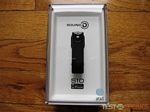
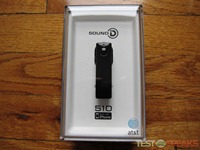

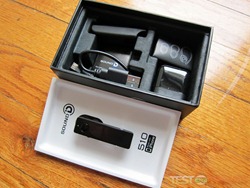
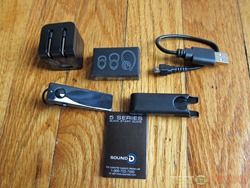
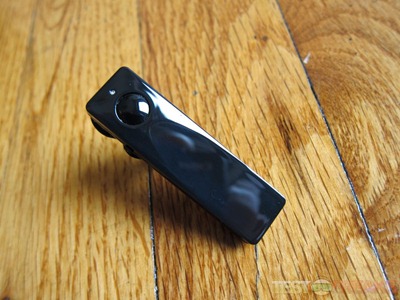
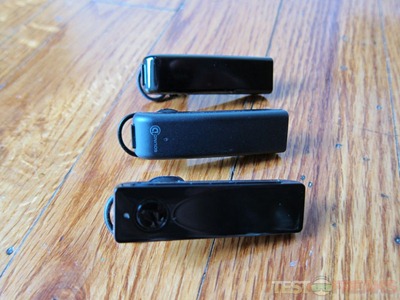
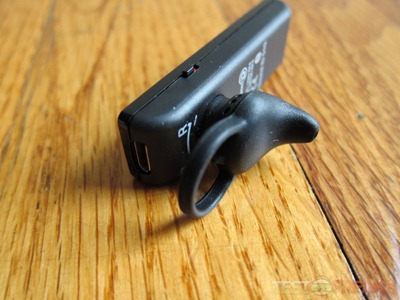
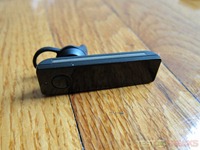
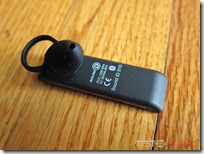
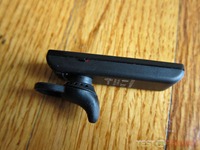
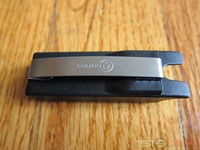
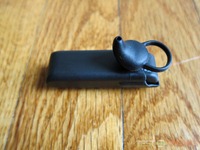
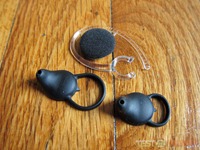
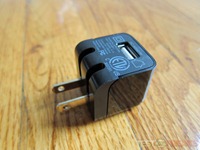
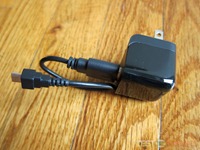
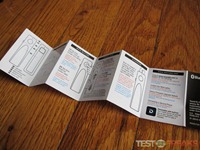
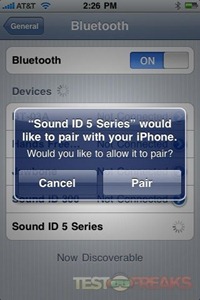

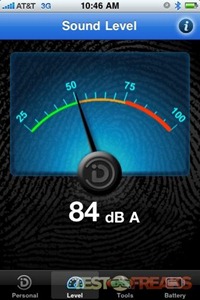
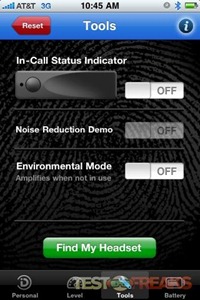
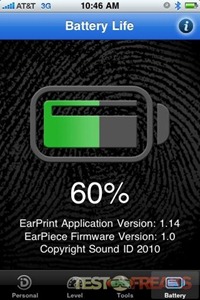
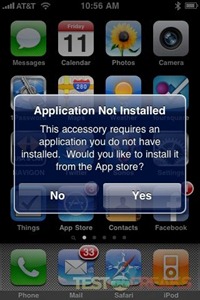





8 comments for “Review of Sound ID 510 Bluetooth Headset”